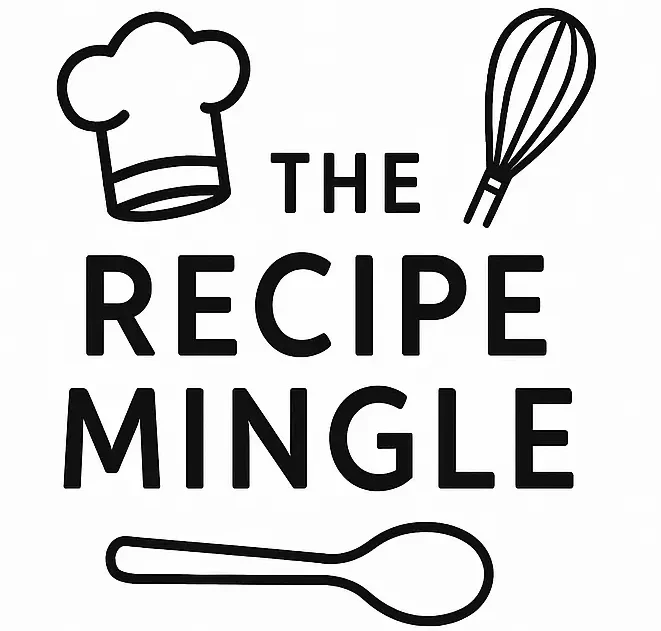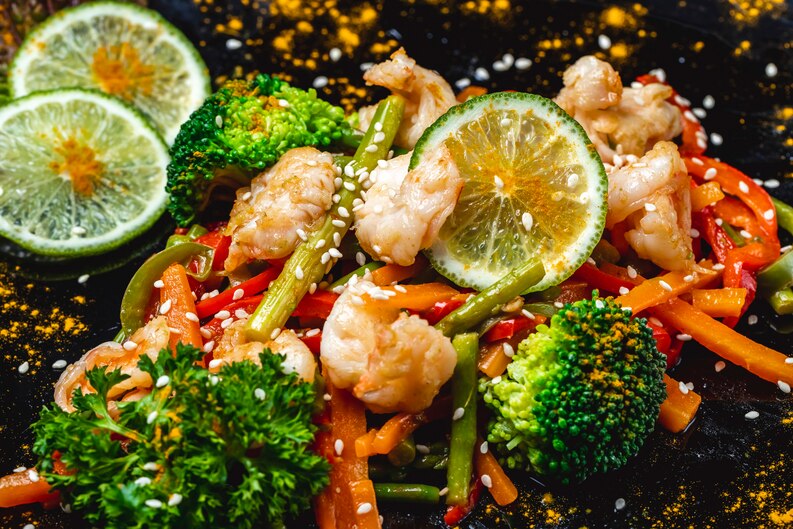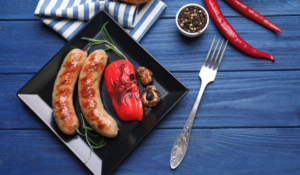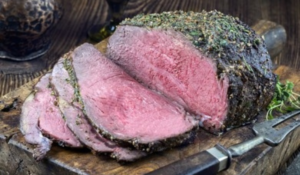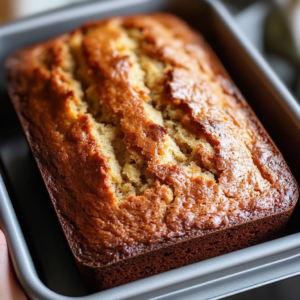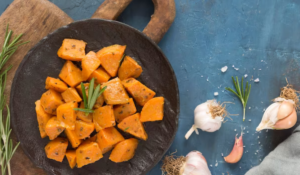ntroduction to Frozen Shrimp Cuisine
Embarking on the culinary journey of learning how to cook frozen shrimp opens up a world of delightful flavors and versatile dishes. Shrimp, celebrated for its succulent taste and adaptability, stands as a popular choice in kitchens worldwide. This guide aims to demystify the process of cooking frozen shrimp, making it an accessible and enjoyable experience for everyone.
The allure of shrimp in culinary arts doesn’t just lie in its delicious flavor; it also offers significant health benefits. Rich in protein and low in calories, shrimp makes a nutritious addition to various diets. Understanding how to cook frozen shrimp not only enhances your cooking repertoire but also invites a healthy and flavorful component to your meals.
In this introduction, we’ll set the stage for your journey into the world of frozen shrimp cuisine. From selecting the right kind to mastering different cooking methods, you’re about to discover the ease and satisfaction that comes with cooking this beloved seafood. Whether you’re aiming for a quick weeknight dinner or a lavish meal for guests, knowing how to cook frozen shrimp is an invaluable skill that promises to elevate your culinary adventures.For more insights on the benefits of including shrimp in your diet, check out this comprehensive resource from Seafood Health Facts.
Selecting the Best Frozen Shrimp
Choosing the right frozen shrimp is a crucial step in mastering how to cook frozen shrimp. The quality of the shrimp you select directly influences the flavor and success of your dish. When navigating the frozen seafood aisle, keep an eye out for certain key indicators to ensure you’re bringing home the best product.
Firstly, pay attention to the appearance of the shrimp. Good quality frozen shrimp should have a clean, translucent look with no signs of freezer burn or ice crystals, which can indicate that the shrimp has been stored for too long or thawed and refrozen. Also, check for any discolorations or black spots, which can be a sign of poor handling.
The packaging also offers valuable clues. Opt for shrimp that is well-sealed in airtight packaging. This helps maintain the shrimp’s freshness and flavor. Additionally, look for labels that provide information on the shrimp’s origin and whether it has been sustainably sourced, which is important for environmental conservation.
Size and count per pound is another aspect to consider. Frozen shrimp are often sold by size, indicated by a count number. This number tells you how many shrimp are in one pound. Depending on your recipe, choose a size that best suits your cooking needs. Larger shrimp are great for grilling or sautéing, while smaller ones work well in soups and stews.
Finally, consider whether to buy shrimp that has been peeled and deveined or whole. Peeled and deveined shrimp offer convenience and save time, but whole shrimp can have more flavor and are often less expensive.
By keeping these tips in mind, you can select the best frozen shrimp for your dishes, ensuring a delicious outcome when you cook them.
Preparation Essentials
Before you dive into how to cook frozen shrimp, proper preparation is key. This step ensures that your shrimp not only tastes great but also maintains a desirable texture. Here are essential tips to prepare your frozen shrimp for cooking:
Thawing:
Begin by safely thawing your shrimp, as cooking it straight from frozen can lead to uneven cooking. The best method is to transfer the shrimp from the freezer to the refrigerator several hours before cooking, allowing it to thaw gradually. For a quicker method, place the shrimp in a colander under cold running water until thawed. Avoid using warm water, as it can lead to bacterial growth.
Cleaning and Deveining:
Once thawed, it’s time to clean and devein the shrimp if it’s not already done. Start by removing the shell, which should peel off easily. To devein, make a shallow cut along the back of the shrimp and gently pull out the dark vein with a knife or your fingers. This step is crucial for both aesthetic reasons and to remove any grit.
Patting Dry:
After cleaning, pat the shrimp dry with paper towels. Removing excess moisture is important to achieve a nice sear and prevent the shrimp from steaming when you cook it.
Seasoning:
Before cooking, season your shrimp according to your recipe. Even a simple seasoning of salt and pepper can enhance the natural flavors of the shrimp.
By following these preparation essentials, you’ll set the stage for successfully cooking delicious shrimp. Whether you’re grilling, sautéing, or adding it to a pasta dish, starting with properly prepared shrimp is a game-changer in mastering how to cook frozen shrimp.
Cooking Techniques Explored
Mastering how to cook frozen shrimp involves exploring various cooking techniques that can bring out the best in this versatile seafood. Each method offers a unique flavor and texture, making shrimp a delightful ingredient in many dishes. Here are some popular techniques to consider:
Boiling: Boiling is a simple and quick method. Start by bringing a pot of salted water to a rolling boil. Add the shrimp and cook for 2-3 minutes or until they turn pink and opaque. Be careful not to overcook, as shrimp can become tough. Once done, immediately transfer them to a bowl of ice water to stop the cooking process.
Sautéing: Sautéing shrimp in a pan over medium-high heat with a bit of oil or butter allows for a flavorful, golden crust. Season the shrimp and cook for 1-2 minutes on each side. Add garlic, herbs, or spices to the pan for extra flavor.
Grilling: Grilling imparts a smoky flavor that’s perfect for summer barbecues. Thread the shrimp onto skewers, brush with oil, and season. Grill over medium-high heat for 2-3 minutes per side. Shrimp are ready when they have a slight char and are pink and opaque.
Baking: For a healthier option, baking shrimp in the oven is ideal. Preheat your oven, arrange the shrimp on a baking sheet, season, and bake for about 8-10 minutes. This method is great for cooking shrimp in larger batches.
Each of these techniques offers a different way to enjoy shrimp. Whether you prefer the simplicity of boiling, the quickness of sautéing, the smoky flavor from grilling, or the healthiness of baking, there’s a method to suit every taste. Experimenting with these techniques will enhance your skills in how to cook frozen shrimp, leading to delicious and satisfying meals.
Flavor Enhancements
When you learn how to cook frozen shrimp, you also unlock the potential to infuse them with a variety of flavors. Enhancing the natural taste of shrimp can transform your dish from good to extraordinary. Here are some effective ways to add more flavor to your shrimp:
Marinades:
Marinades are a fantastic way to impart flavor into shrimp. Combine ingredients like olive oil, lemon juice, garlic, herbs, and spices, and let the shrimp marinate for about 15-30 minutes before cooking. Avoid marinating for too long, as acidic components can start to cook the shrimp.
Seasonings:
A blend of the right seasonings can elevate the taste of shrimp. Experiment with combinations like garlic powder, paprika, cayenne pepper, or a touch of cumin for a warm, spicy kick. For a simpler approach, salt, pepper, and a squeeze of lemon juice can do wonders.
Sauces:
Adding sauces either during the last few minutes of cooking or as a finishing touch can greatly enhance the flavor. Consider classic options like garlic butter, creamy alfredo, spicy sriracha, or a tangy barbecue sauce depending on the cuisine you’re aiming for.
Herbs and Aromatics:
Fresh herbs like parsley, cilantro, or dill, and aromatics like onion, garlic, and ginger, add fresh, vibrant flavors to shrimp. Incorporate them during cooking or sprinkle them on top before serving.
By experimenting with these flavor enhancements, you can create a range of delicious dishes with your frozen shrimp. Whether you’re aiming for bold and spicy or light and zesty, these tips will help you master the art of how to cook frozen shrimp with flavors that tantalize your taste buds.
Salmon Bites Recipe: Easy, Flavorful Steps for Perfect Appetizers
How to Cook Frozen Shrimp
Cooking frozen shrimp is a straightforward process that can yield delicious results. Whether you’re a novice or an experienced cook, these steps will guide you through how to cook frozen shrimp perfectly every time.
- Thaw Properly: Begin by thawing your shrimp if they’re frozen. The best method is to transfer them from the freezer to the refrigerator several hours before cooking. For a quicker option, place them under cold running water until they’re fully thawed.
- Prep the Shrimp: Once thawed, rinse the shrimp under cold water and pat them dry with paper towels. If they’re not already peeled and deveined, do so at this stage. Removing the shell and the vein not only improves the appearance but also the taste.
- Season Well: Season your shrimp according to the recipe or your preference. Simple salt and pepper work well, but you can also use a variety of herbs, spices, or a marinade for extra flavor.
- Choose Your Cooking Method: Decide on your cooking method. Whether you’re boiling, sautéing, grilling, or baking, each method requires a different approach. For boiling, cook the shrimp in salted boiling water for 2-3 minutes. For sautéing, cook them in a hot pan with oil or butter for 1-2 minutes on each side. For grilling, place them on skewers and grill for 2-3 minutes per side. For baking, arrange them on a baking sheet and bake in a preheated oven for 8-10 minutes.
- Avoid Overcooking: Shrimp cook quickly, so it’s important to watch them closely. They’re done when they turn pink and opaque. Overcooking can make them tough and rubbery.
- Serve Immediately: Serve your cooked shrimp immediately for the best flavor and texture. They can be enjoyed on their own, with a dipping sauce, or as part of a larger dish.
By following these steps, you’ll find that learning how to cook frozen shrimp is not only easy but also rewarding. With a bit of practice, you’ll be able to whip up delicious shrimp dishes that are sure to impress.
Creative Recipes with Frozen Shrimp
Unlocking the versatility of frozen shrimp can transform your meals into culinary delights. If you’re wondering how to cook frozen shrimp in creative ways, here are some recipe ideas that are both delicious and easy to prepare:
Shrimp Scampi:
This classic dish is both simple and elegant. Sauté garlic in butter and olive oil, add the thawed shrimp, and cook until pink. Splash in some white wine and lemon juice, and finish with a sprinkle of parsley. Serve over pasta or with crusty bread for a satisfying meal.
Ingredients:
- 1 pound large shrimp, peeled and deveined
- 3 tablespoons unsalted butter
- 2 tablespoons olive oil
- 4 cloves garlic, minced
- 1/2 cup dry white wine
- Juice of 1 lemon
- 1/4 cup chopped parsley
- Salt and freshly ground black pepper to taste
- Red pepper flakes (optional)
- 1/2 pound spaghetti or linguine
Directions:
- In a large pot, cook the pasta according to package instructions until al dente. Drain and set aside.
- While the pasta cooks, heat the olive oil and 2 tablespoons of butter in a large skillet over medium heat.
- Add the garlic and sauté for about 1 minute, until fragrant but not browned.
- Increase the heat to medium-high, add the shrimp, and cook for 2-3 minutes on each side, or until they turn pink and opaque.
- Remove the shrimp from the skillet and set aside.
- Add the white wine to the skillet, scraping up any browned bits from the bottom. Let it simmer for 2-3 minutes to reduce slightly.
- Stir in the remaining 1 tablespoon of butter, lemon juice, parsley, salt, pepper, and red pepper flakes (if using).
- Return the shrimp to the skillet and toss to coat in the sauce.
- Serve the shrimp over the cooked pasta, garnished with additional parsley if desired.
Prep Time: 10 minutes | Cooking Time: 20 minutes | Total Time: 30 minutes
Kcal: 350 kcal | Servings: 4 servings
Asian-Inspired Shrimp Stir-Fry:
Give your shrimp an Asian twist. Stir-fry your favorite vegetables like bell peppers, broccoli, and carrots. Add the shrimp and cook until they’re pink. Toss everything with a sauce made from soy sauce, garlic, ginger, and a hint of honey. Serve over rice or noodles for a quick and flavorful dinner.
Ingredients:
- 1 pound large shrimp, peeled and deveined
- 2 tablespoons vegetable oil
- 1 red bell pepper, thinly sliced
- 1 yellow bell pepper, thinly sliced
- 1 cup snap peas
- 2 carrots, thinly sliced
- 3 cloves garlic, minced
- 1 tablespoon fresh ginger, grated
- 2 tablespoons soy sauce
- 1 tablespoon oyster sauce
- 1 tablespoon honey
- 1 teaspoon sesame oil
- 1/4 cup chicken or vegetable broth
- 1 teaspoon cornstarch
- Salt and pepper to taste
- Sesame seeds and sliced green onions for garnish
Directions:
- In a small bowl, whisk together soy sauce, oyster sauce, honey, sesame oil, broth, and cornstarch. Set aside.
- Heat vegetable oil in a large skillet or wok over medium-high heat.
- Add shrimp to the skillet and cook until pink, about 2-3 minutes per side. Remove shrimp and set aside.
- In the same skillet, add red and yellow bell peppers, snap peas, and carrots. Stir-fry for about 3-4 minutes.
- Add garlic and ginger to the skillet and stir-fry for another minute.
- Return the shrimp to the skillet and pour the sauce over the mixture. Stir well to combine.
- Cook for another 2-3 minutes, or until the sauce has thickened.
- Season with salt and pepper to taste.
- Garnish with sesame seeds and green onions before serving.
Prep Time: 15 minutes | Cooking Time: 10 minutes | Total Time: 25 minutes
Kcal: 220 kcal | Servings: 4 servings
Garlic Lemon Shrimp Skewers:
Skewering shrimp makes for an excellent grilling option. Marinate the shrimp in a mixture of garlic, lemon zest, olive oil, and herbs. Grill the skewers until the shrimp are cooked through. These skewers are great for barbecues or as a tasty appetizer.
Ingredients:
- 20 large shrimp, peeled and deveined
- 2 lemons, juiced and zested
- 4 cloves garlic, minced
- 2 tablespoons olive oil
- 1 teaspoon paprika
- 1/2 teaspoon red pepper flakes
- Salt and pepper to taste
- Fresh parsley, chopped (for garnish)
- Wooden or metal skewers
Directions:
- In a bowl, combine lemon juice, lemon zest, minced garlic, olive oil, paprika, red pepper flakes, salt, and pepper. Mix well.
- Add the shrimp to the marinade and let sit for 15-20 minutes in the refrigerator.
- Preheat the grill to medium-high heat.
- Thread the marinated shrimp onto skewers.
- Grill the shrimp skewers for 2-3 minutes on each side or until shrimp are pink and cooked through.
- Garnish with chopped parsley before serving.
Prep Time: 25 minutes | Cooking Time: 6 minutes | Total Time: 31 minutes
Kcal: 150 kcal | Servings: 4 servings
Creamy Shrimp Alfredo:
For a comforting meal, incorporate shrimp into a creamy Alfredo sauce. Cook the shrimp, then mix them into a sauce made from cream, Parmesan cheese, and garlic. Serve over fettuccine for a rich and indulgent dish.
Ingredients:
- 1 pound large shrimp, peeled and deveined
- 12 ounces fettuccine pasta
- 2 tablespoons unsalted butter
- 1 small onion, finely chopped
- 3 cloves garlic, minced
- 1 cup heavy cream
- 1 cup grated Parmesan cheese
- 1/2 teaspoon salt
- 1/4 teaspoon black pepper
- 1/4 teaspoon paprika
- 2 tablespoons fresh parsley, chopped
- Lemon wedges, for serving
Directions:
- Cook the fettuccine according to package instructions until al dente. Drain and set aside.
- In a large skillet, melt butter over medium heat. Add onion and garlic, sautéing until the onion is translucent, about 3-4 minutes.
- Add the shrimp to the skillet and cook until they are pink and opaque, about 2-3 minutes per side. Remove shrimp from skillet and set aside.
- In the same skillet, add heavy cream, Parmesan, salt, pepper, and paprika. Stir and cook over medium heat until the sauce thickens, about 4-5 minutes.
- Return the cooked shrimp and cooked pasta to the skillet. Toss to coat the pasta and shrimp in the sauce.
- Garnish with chopped parsley and serve with lemon wedges.
Prep Time: 10 minutes | Cooking Time: 20 minutes | Total Time: 30 minutes
Kcal: 590 kcal | Servings: 4 servings
